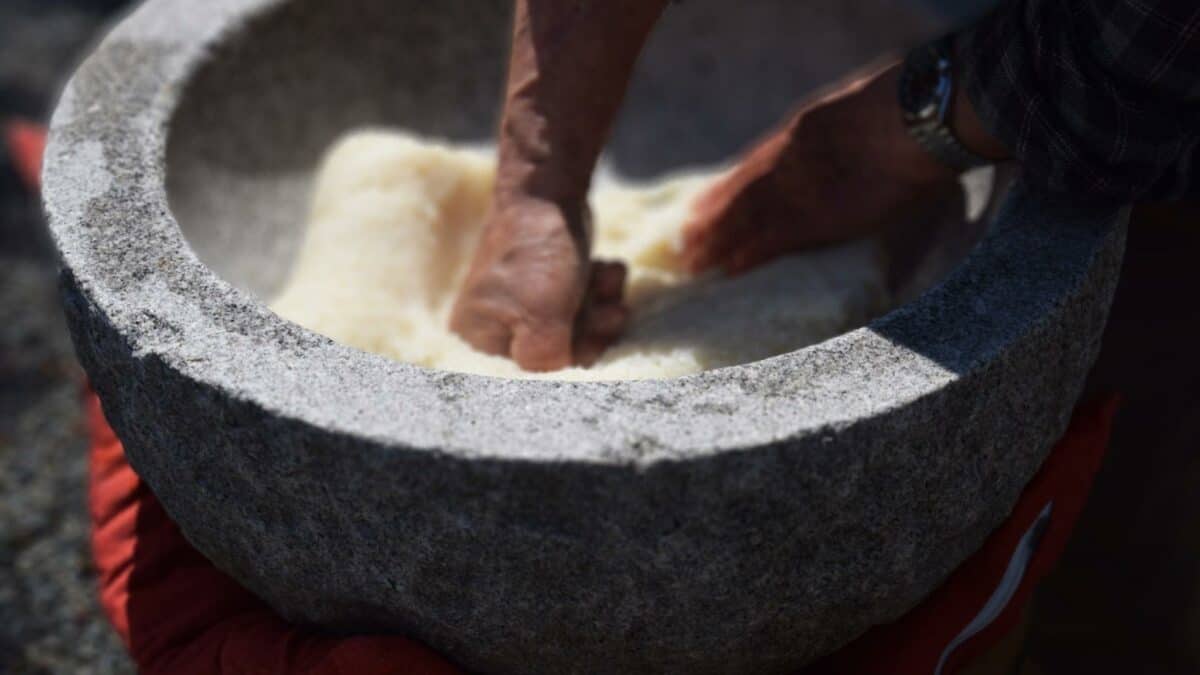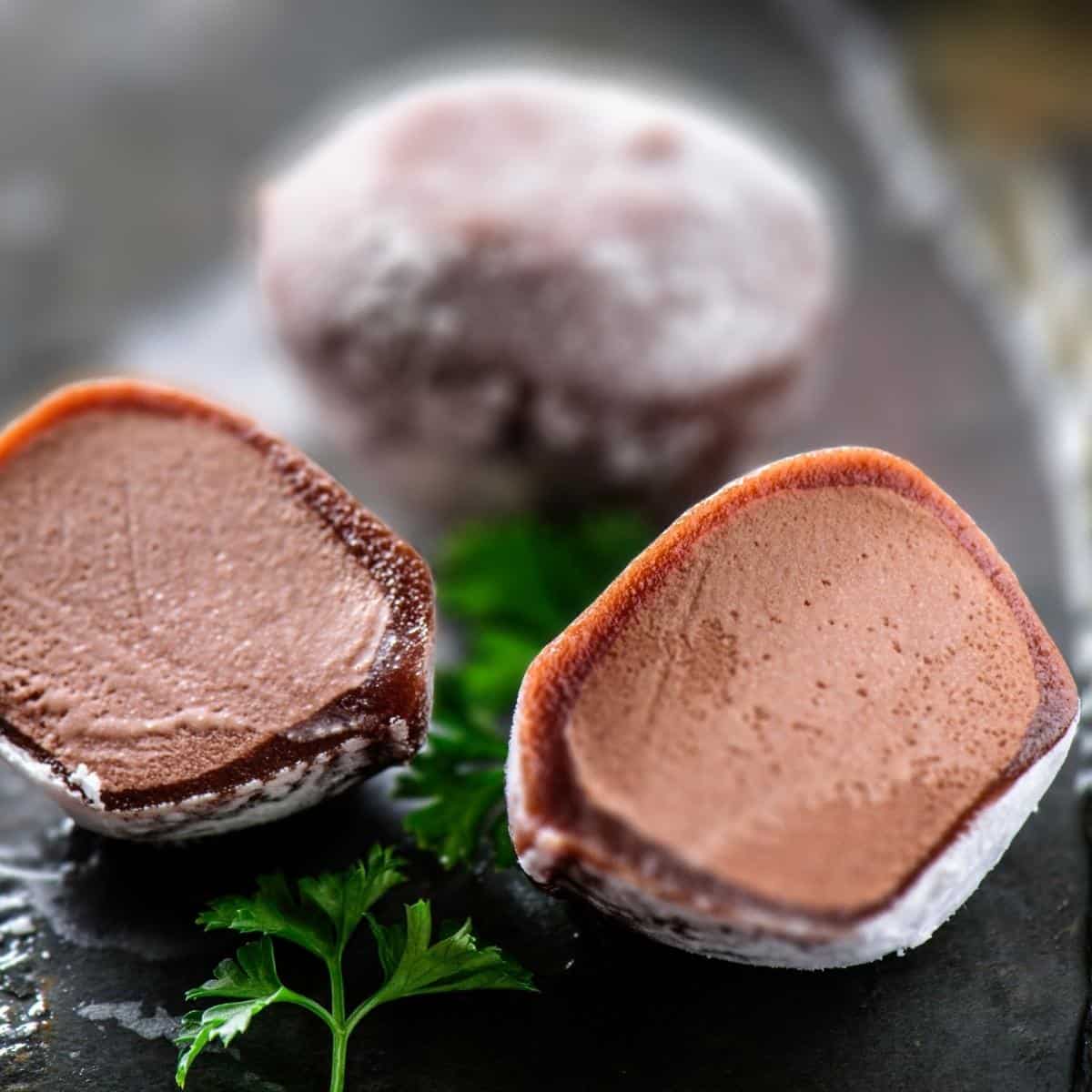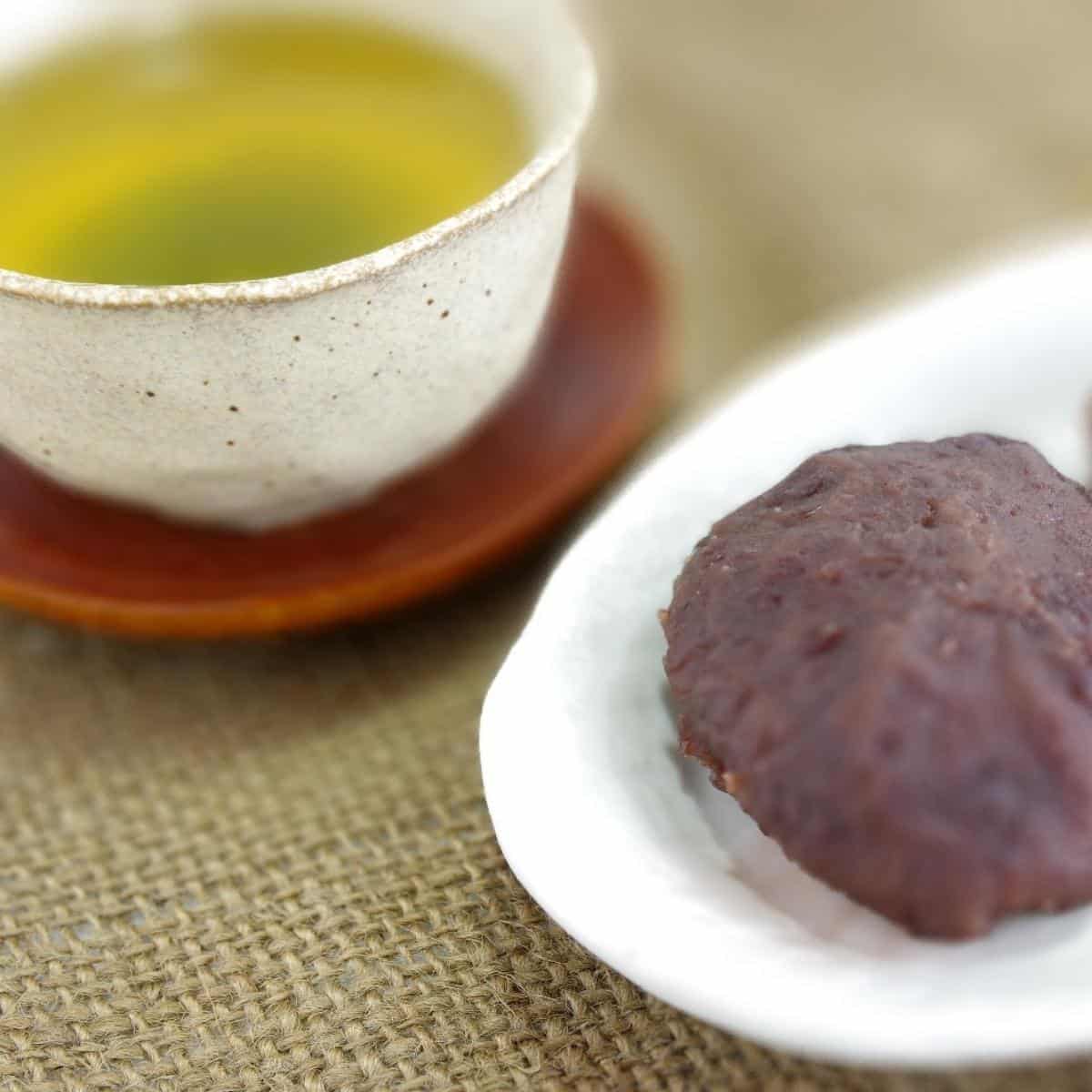Mochi: Where Did This Pounded Rice Dough Come From?
Mochi is Japanese rice cake made of mochigome, a short-grain japonica glutinous rice. The rice is pounded into paste and molded into the desired shape.
In Japan it is traditionally made in a ceremony called mochitsuki. While also eaten year-round, mochi is a traditional food for the Japanese New Year for Oshōgatu and is commonly sold and eaten during that time.
Mochi is called môa-chî (麻糬 or 𫃎糬) in Taiwan. Mochi is a multicomponent food consisting of polysaccharides, lipids, protein and water.

Mochi has a heterogeneous structure of amylopectin gel, starch grains and air bubbles. This rice is characterized by its lack of amylose in starch and is derived from short or medium japonica rices.
The protein concentration of the rice is a bit higher than normal short-grain rice and the two also differ in amylose content.
In mochi rice, the amylose content is negligible which results in the soft gel consistency of mochi.
Mochi has a unique taste that is hard to describe. On its own, it tastes like rice but with a sticky, stretchy, soft, and chewy texture. However, mochi is very versatile and can be flavored in endless ways. Different regions of Japan have different mochi specialties, so there is no one answer to this question.

Check out our new cookbook
Bitemybun's family recipes with complete meal planner and recipe guide.
Try it out for free with Kindle Unlimited:
Read for freeIn this post we'll cover:
What is mochi?
At first glance, mochi looks more like a ball of play dough than a yummy treat, but it’s a fun dessert adults and kids will love.
The most popular types of mochi are green tea and red bean paste flavored. But, there is so much variety, it’s hard to list them all (I’ll give it a try though!).
You can even find savory mochi or mochi soup and noodles dishes.
In Japan, mochi refers to the plain rice mochi ball, not Westernised versions like ice cream mochi. It can be sweet or savory, depending on the filling and flavoring.
To make mochi using traditional methods, people take the glutinous rice and pound it for a long time until it takes on an elastic and smooth texture.
Then they add classic fillings like red bean paste or cover the mochi in soybean flour.
Most think the filled rice ball is called mochi, but mochi only refers to the pounded rice.
Types of dishes made with mochi
There are a few dishes made with mochi:
- Kiri-mochi, a square-shaped block of mochi that has been dried for preservation
- Ozoni, a traditional New Year soup with mochi
- Kagami-mochi, made to look like an ancient mirror
- Isobeyaki mochi, wrapped in dried seaweed
- Kinako mochi, sweetened with kinako soy bean powder
- Hishi-mochi, made especially for the girls’ festival
- Daifuku, what most people think of when talking about mochi. It’s the mochi balls stuffed with something sweet like red bean paste
Dango is often thought of as made with mochi, but they are made with rice flour molded into balls, so there is no mochi used in the making of dango.
Mochi is made out of a special type of rice, which is called mochi gome, and it’s a Japanese short-grained glutinous rice, so you can use any short-grained glutinous rice for this recipe.
This kind of rice is popular in Asia, and it has a low amylose content which makes it very sticky when cooked.
It’s kind of waxy and pearly raw, but it’s great for making dishes like sushi or mochi where the rice has to be sticky and clumpy.
You can use glutinous rice and cook it (these rice cooker are great for it), or you can use mochi rice flour to make these delicious confections.
The gome rice is pounded into a dough and filled with sweet ingredients or tinted with matcha powder and various types of food coloring to make mochi.
Plain mochi has a sort of neutral flavor similar to gummy candy. It is chewy, and it has the texture of play dough, but trust me, it’s very tasty.
Mochi is not ice cream but rather sticky rice balls filled with something sweet. There was no ice cream variant originally, but in the 1980s, mochi filled with ice cream instead of not frozen fillings like red bean paste was created in Korea and then Los Angeles America.
Origin of mochi
Mochi is commonly associated with Japanese New Year celebrations and traditions.
To prepare for the new year, families make Kagami Mochi, which is a large piece of cakey decoration. It has the shape of a big snowman with a big mochi base and smaller mochi balls on top.
In addition, the Japanese also make regular mochi to eat as a dessert during the celebration. Making mochi was always a big family and communal affair.
The history of mochi goes far back, although there is no exact known date of when mochi was invented. It’s believed that this dessert originates sometime in the Kofun period (300 to 538 AD) in western Japan.
Making dough from pounded rice was also a practice in China, but if and when the Chinese rice pounding influenced Japanese mochi is unclear.
Mochi was a common farmer’s food because the farmer’s used last fall’s rice harvest to make these cakes. They believed that mochi represents the rice’s soul and spirit.
Therefore, mochi is the home of the rice’s spirit, called inadama. You can practically call mochi a delicious soul food and comforting dessert.
How do you eat mochi?
Mochi is extremely sticky and chewy so you should bite of small pieces at a time. Getting a larger piece stuck in your throat could suffocate you. Every year, the Japanese government releases stats on how many people have died from mochi that New Years’ celebration so eat carefully!
Mochi can be eaten in many ways. Either as blocks or balls in soup, grilled wrapped with seaweed or sweetened with kinako soy bean powder, or as daifuku with a sweet filling to eat with tea.
Do you eat mochi cold?
You eat the filled sweet mochi daifuku cold. These are the mochi balls you can eat with your tea. Mochi ice cream is cold as well of course, but there are warm dishes with mochi in soup of warm grilled mochi.
Mochi: nutritional information
One piece of daifuku mochi contains approximately:
- 100 calories
- 1 gram of fat
- 15 mg sodium
- 23 grams of carbohydrates
Generally, mochi is considered to be a relatively healthy treat, but it also depends on the fillings like the Americanized ice cream or custard mochi, which contain more carbs and fats because of the fillings.
Most mochi is gluten-free and cholesterol-free, which is great news considering it’s still a treat/dessert.
Most mochi is also not very sweet but enough to satisfy a sweet craving. And since it’s low in calories, it’s quite diet-friendly as long as you eat only a piece or two.
Check out our new cookbook
Bitemybun's family recipes with complete meal planner and recipe guide.
Try it out for free with Kindle Unlimited:
Read for freeJoost Nusselder, the founder of Bite My Bun is a content marketer, dad and loves trying out new food with Japanese food at the heart of his passion, and together with his team he's been creating in-depth blog articles since 2016 to help loyal readers with recipes and cooking tips.
